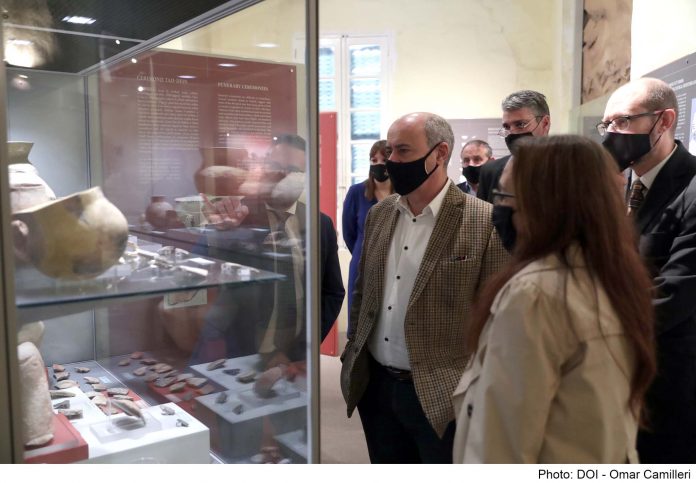The extensive project to restore the facades overlooking the internal courtyard of the National Museum of Archaeology in Valletta has been completed. These works are part of a much larger project being carried out involving this museum with the aim of providing visitors with a more holistic experience.
On the occasion of the completion of works in the courtyard, Minister for the National Heritage, the Arts and Local Government José Herrera visited the National Museum of Archaeology and was briefed about the ongoing works by Heritage Malta’s Chief Executive Officer Noel Zammit.
Through this project, the courtyard facades have been restored including the timber apertures overlooking the courtyard, some of which were totally renovated due to their precarious condition. A large timber balcony which acts as a passageway leading to different areas of the building was restored as well. Structural works have also been carried out on the museum’s roofs, where a new rain draining system was also installed.
Alongside the courtyard project, other works are ongoing at the museum. Leading among them is the lengthy process of improving the interpretation of the permanent exhibition on the ground floor. This includes reviewing all the information on the interpretation panels, making it more accessible to the public and with a stronger focus on the visual aspect.
Minister José Herrera praised the initiative to carry out these works and stated that it would allow the National Museum of Archaeology to better reflect our country’s rich history while offering a unique and immersive experience. This is being done in the framework of the vision launched a few months ago, through which all Heritage Malta sites in Valletta will offer together a holistic and unique experience for visitors.
Noel Zammit said that works in the museum were strongly boosted during the months when the museum was closed to the public due to the Covid-19 pandemic. He added that apart from restoration and embellishment works and the improvement in interpretation, historical research and physical surveys are ongoing in various parts of the building, in order to better understand the long and rich history of the Auberge de Provence, which houses the museum.










